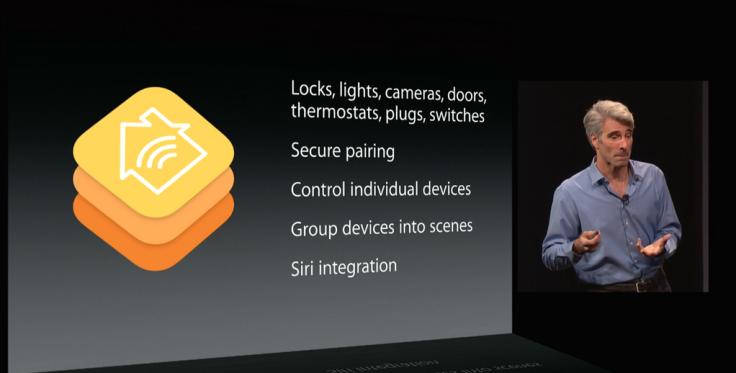Apple HomeKit devices coming in June: What is it and how does it work?

The first devices using Apple's new HomeKit system will go on sale in June, paving the way for your iPhone and Siri to control almost every aspect of your home.
Announced back at WWDC in June 2014, HomeKit is a way for different makers of connected 'Internet of Things' (IoT) devices such as smart light bulbs, door locks, curtains, alarms, speakers and more to communicate with each other and with Apple produce using a common language.
"HomeKit has been available [for developers to work on] for just a few months and we already have dozens of partners who have committed to bringing HomeKit accessories to market and we're looking forward to the first ones coming next month," an Apple spokesperson told the Wall Street Journal, refuting claims the system had been delayed.
The timing suggests Apple will show off the first HomeKit products at its annual Worldwide Developer Conference (WWDC), which starts on 8 June in San Francisco, a year after it was first announced.
What can HomeKit do?
Any household device capable of connecting to the internet (either by itself, or by tethering over Bluetooth to a smartphone) can be configured to communicate with HealthKit. These devices include thermostats, light bulbs, smoke alarms, door locks, garage doors, window blinds, heating and air conditioning systems, mains plug sockets, air and water quality monitors, security cameras and kitchen appliances like coffee machines.
No matter who makes them, providing the manufacturer has signed up to HomeKit and produced Apple-friend software, then the products will work seamlessly with the iPhone or iPad. Instead of an app controlling everything in your house, HomeKit is likely to run in the background, using Siri and your location to control everything. The latter would see the heating switch on when you leave work to come home, for example.
The Apple TV set-top box will also be brought into play, acting as an intermediary and letting you issue spoken commands through Siri to your house from a remote location. Rather than a central hub for controlling every HomeKit product, the Apple TV will act as an entry point to your home network of IoT devices, letting you issue commands to them when you're away. An example here would be to unlock your garage door for the postman to leave a package inside.
To avoid hackers gaining control of your house - and entry, should the door locks be compromised - Apple says all communications through HomeKit and between your iPhone and IoT devices will be encrypted.
How is it set up?
Once you have bought an iPhone and all of the HomeKit-compatible accessories you want to use, the software needs to be taught where each item is. HomeKit can be configured to include multiple rooms in several different houses. After setting up each room, actions can be assigned to them. Tell Siri "I'm going to bed" and the system (once programmed) can lock your doors and windows, close the blinds, switch downstairs lights off and set the alarm.
Companies to already announce HomeKit partnerships with Apple include iHome, Haier, Withings, Philips, iDevices, Belkin, Honeywell and Kwikset.
© Copyright IBTimes 2024. All rights reserved.






